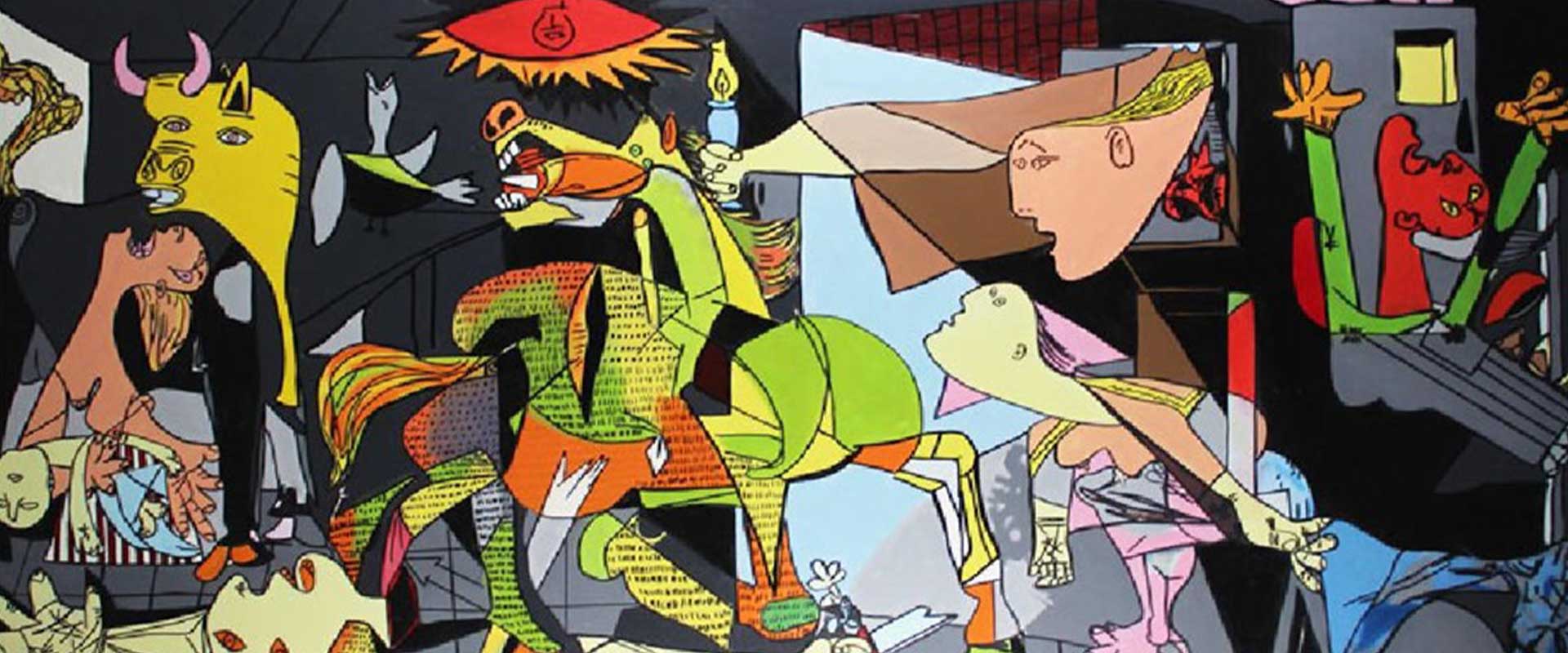Few paintings in history have carried the emotional weight and political urgency of Pablo Picasso’s Guernica. Created in 1937 in response to the bombing of the Basque town of Guernica during the Spanish Civil War, the monumental black-and-white canvas became an international symbol of resistance against tyranny and the horrors of war. Its fractured figures, screaming horses, and distorted faces speak a universal language of grief and outrage. This guide unpacks the historical context, visual elements, and lasting legacy of Guernica, explaining why it remains one of the most influential artworks of the 20th century. For a deeper look at Picasso’s broader career, see our The Life and Legacy of Picasso – A Complete Guide to the Master of Modern Art.
Historical Context: Spain in Turmoil
The Spanish Civil War and the Bombing of Guernica
On April 26, 1937, Nazi German and Italian Fascist forces—supporting General Francisco Franco—bombed the Basque town of Guernica. The attack left hundreds dead and the town in ruins. Picasso, then living in Paris, was commissioned by the Spanish Republican government to create a mural for the Paris International Exposition. This tragic event became the emotional and political catalyst for Guernica.
Picasso’s Political Awakening
Though not always overtly political in his earlier works, the Spanish Civil War galvanized Picasso’s sense of responsibility as an artist. Guernica was his way of bearing witness to atrocity, turning the canvas into a tool for protest.
Composition and Symbolism
Monochrome Palette
The black, white, and gray tones recall newspaper photography, anchoring the painting in documentary reality. The absence of color intensifies the emotional gravity and avoids distracting from the subject.
Key Symbols
- The Bull: Often read as representing brutality and darkness.
- The Horse: Central figure of suffering, pierced and screaming, symbolizing the people’s agony.
- The Fallen Soldier: Broken sword in hand, yet a sprouting flower suggests resilience.
- The Lamp: Positioned like an unblinking eye, a beacon of witness or truth amid chaos.
- The Woman with a Lamp: Emerging from the right, bringing light into the devastation.
Artistic Techniques
Fragmentation and Cubism
Picasso applied his Cubist vocabulary to distort perspective and break forms into jagged shards. This method mirrors the physical and psychological shattering of war.
Scale and Impact
At 11.5 feet tall and 25.6 feet wide, the painting confronts viewers with overwhelming scale, forcing them to enter the space of destruction.
Reception and Legacy
Early Exhibitions
First displayed at the 1937 Paris International Exposition, Guernica traveled extensively to raise awareness and funds for Spanish war relief. It quickly became a touchstone for anti-war activism.
Political Symbolism Across Decades
From protests against the Vietnam War to the Iraq War, reproductions of Guernica have appeared in demonstrations worldwide. Its universal imagery makes it adaptable to many contexts of resistance.
Permanent Home
Today, Guernica resides in the Museo Reina Sofía in Madrid, returning to Spain only after Franco’s death, in accordance with Picasso’s wishes.
Symbolism in Guernica
| Symbol | Possible Meaning | Visual Effect |
|---|---|---|
| Bull | Brutality, fascism, darkness | Immovable, stoic presence |
| Horse | Innocent suffering, the people | Central, dynamic, writhing |
| Fallen Soldier | Defeat, sacrifice, hope | Fragmented body, flower detail |
| Lamp | Truth, witness | Illuminates chaos |
| Woman with Child | Civilian tragedy | Desperate, anguished posture |
How Guernica Changed Modern Art
Art as Protest
Guernica showed that painting could serve as moral testimony, not just aesthetic expression.
Expanding Political Engagement in Art
It inspired artists to use their work as activist platforms, influencing figures from Diego Rivera to contemporary street artists.
Enduring Relevance
Its ambiguity of symbols keeps it alive for reinterpretation, ensuring it remains relevant in every era of conflict.
Related Works
To explore how Picasso’s political art connects to his wider style, see The Weeping Woman, a portrait extending Guernica’s themes of grief and resilience, available in our Pablo Picasso wall art prints collection.
Conclusion
Guernica remains one of the most powerful anti-war statements ever created. Through its monumental scale, monochrome palette, and layered symbolism, Picasso transformed a specific atrocity into a timeless universal warning. It is both a historical document and a living work of resistance. For art lovers seeking to keep its spirit alive, our Pablo Picasso wall art prints offer a way to honor this masterpiece within your own space.
FAQs
Why did Picasso paint Guernica in black and white?
The palette evokes newsprint and emphasizes the starkness of the tragedy.
Is Guernica based on a true event?
Yes, it directly responds to the bombing of the Basque town of Guernica on April 26, 1937.
What is the central message of Guernica?
It’s a condemnation of the horrors of war and a call for human empathy.
Where can I see Guernica today?
It’s housed at the Museo Reina Sofía in Madrid.





